Costa Rica Safety Guide: Is Costa Rica Safe? Yes, If You Do This.

Last updated on April 22nd, 2024 at 11:16 am GMT-6 (Costa Rica time)

Written by Nikki Solano
Nikki is the CEO of Pura Vida! eh? Inc. (Costa Rica Discounts), and the author of the guidebooks Moon Costa Rica (2019, 2021, 2023, and 2025 editions) and Moon Best of Costa Rica (2022 edition) from Moon Travel Guides. Together with her Costa Rican husband, Ricky, she operates the Costa Rica Travel Blog, created the online community DIY Costa Rica, built the Costa Rica Destination Tool, oversees the brand-new (summer 2023) Costa Rica Travel Shop, and designed the Costa Rica Trip Planning 101 E-Course. Also, Nikki wrote the Costa Rica cover feature for Wanderlust Magazine's sustainability-focused Travel Green List issue, showcased Costa Rica destinations and experiences on Rick Steves' Monday Night Travel show and podcast/radio show, and served as the Costa Rica Destination Editor for Essentialist, a luxury travel brand. Want to show your appreciation for her free article below? Thank Nikki here. ❤️️
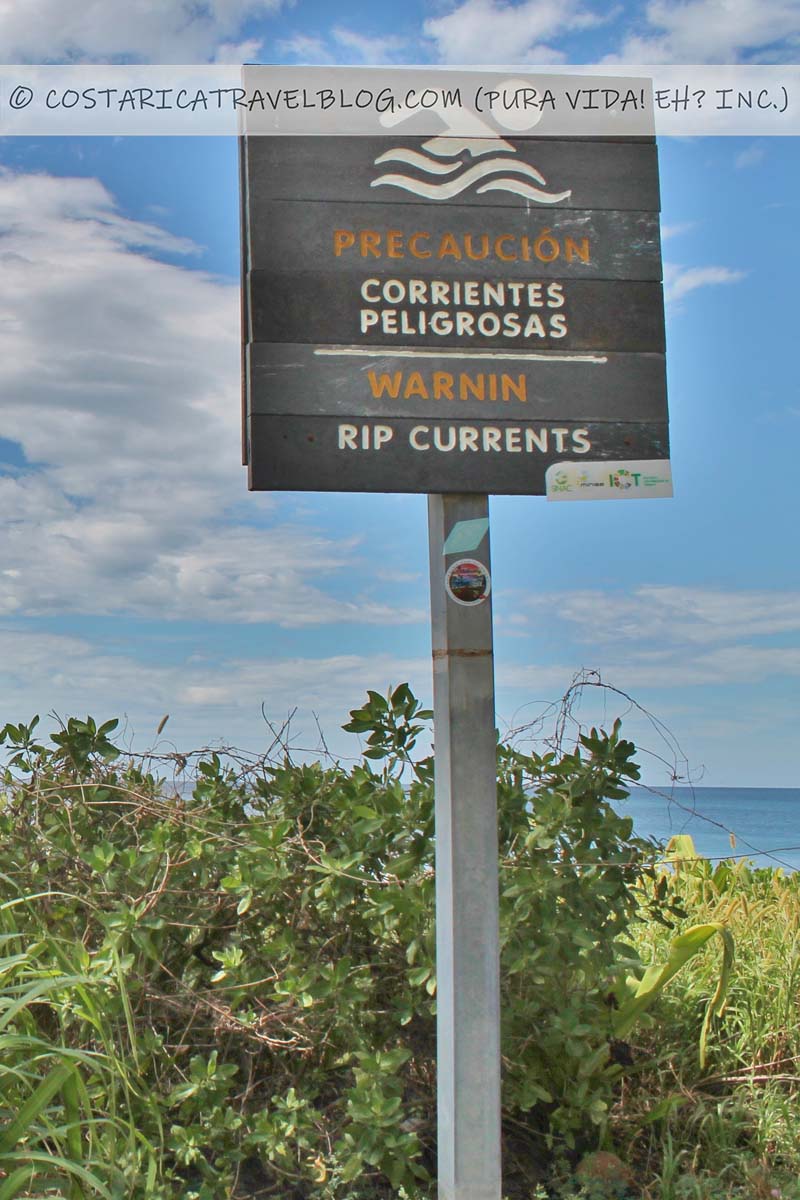
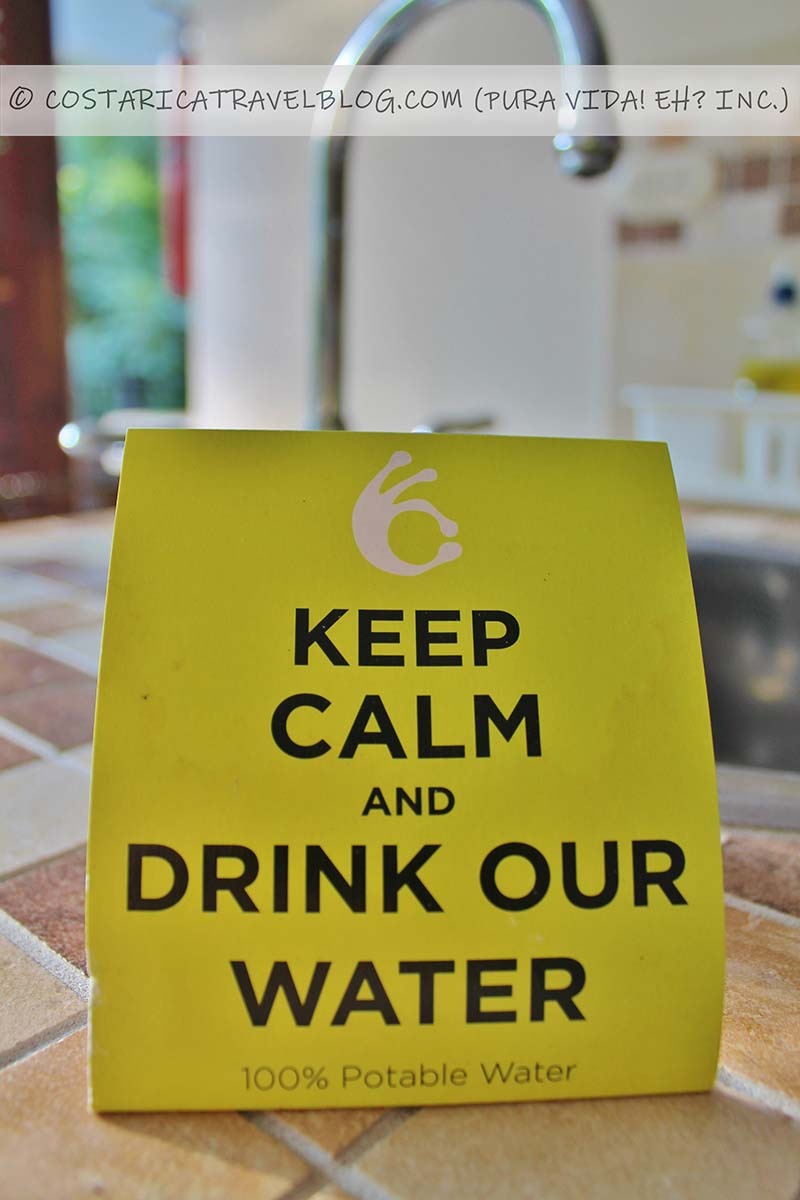
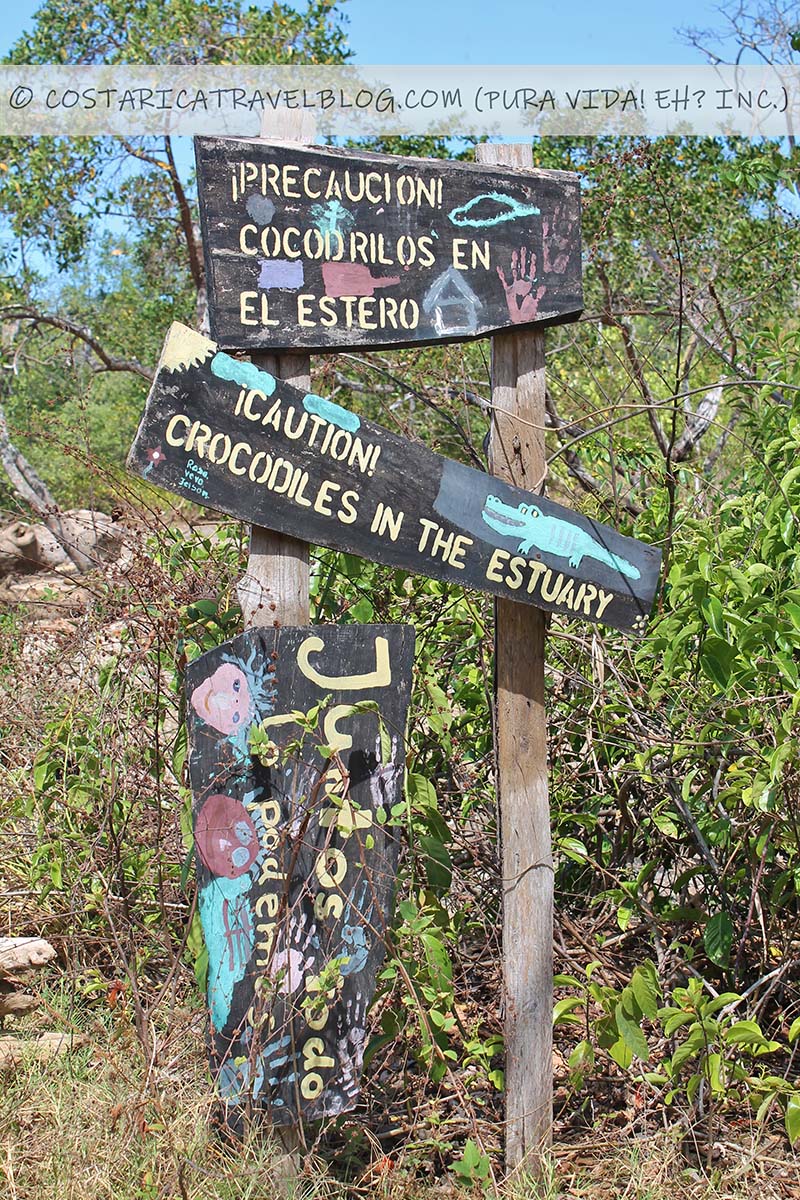
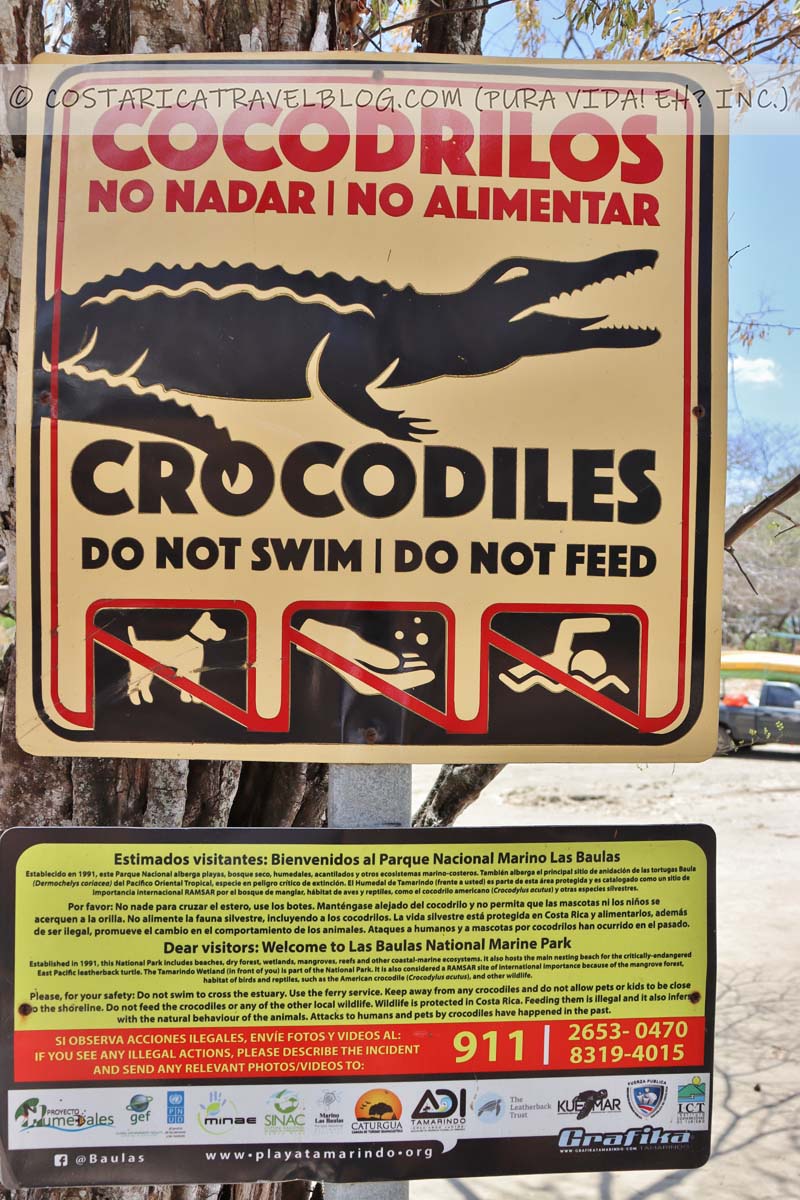
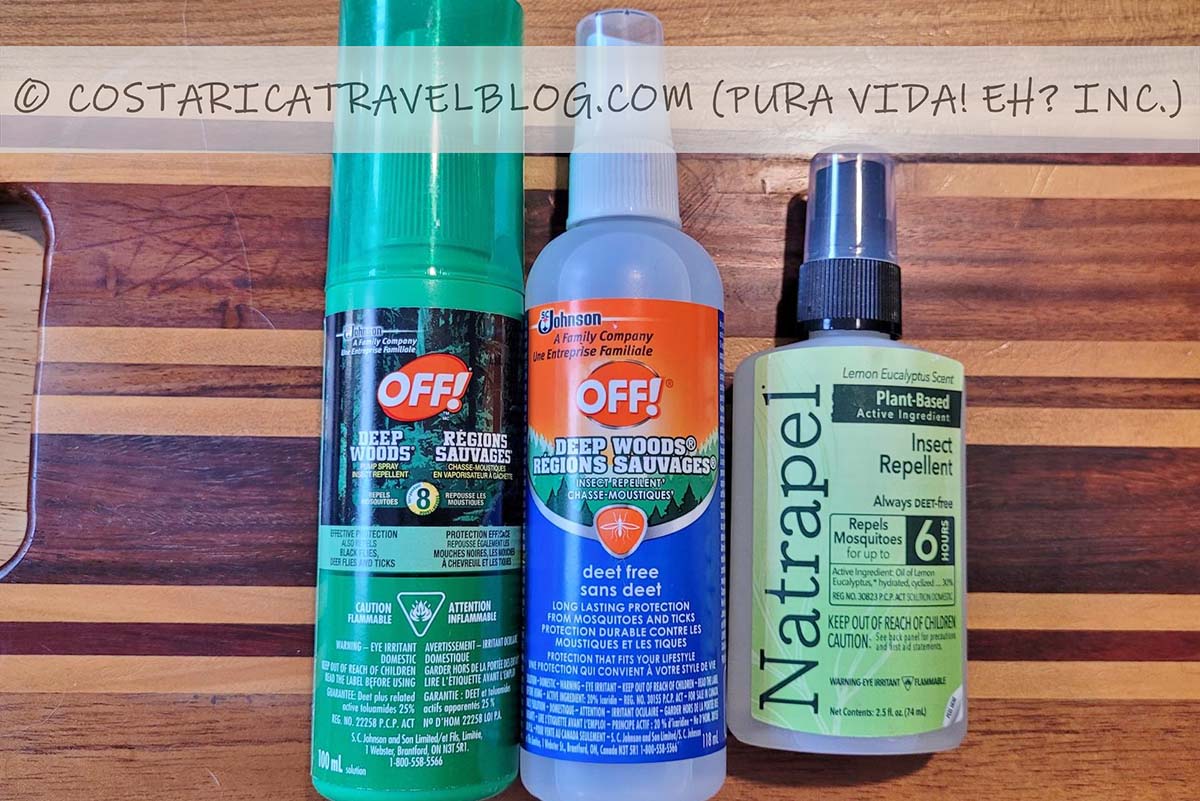

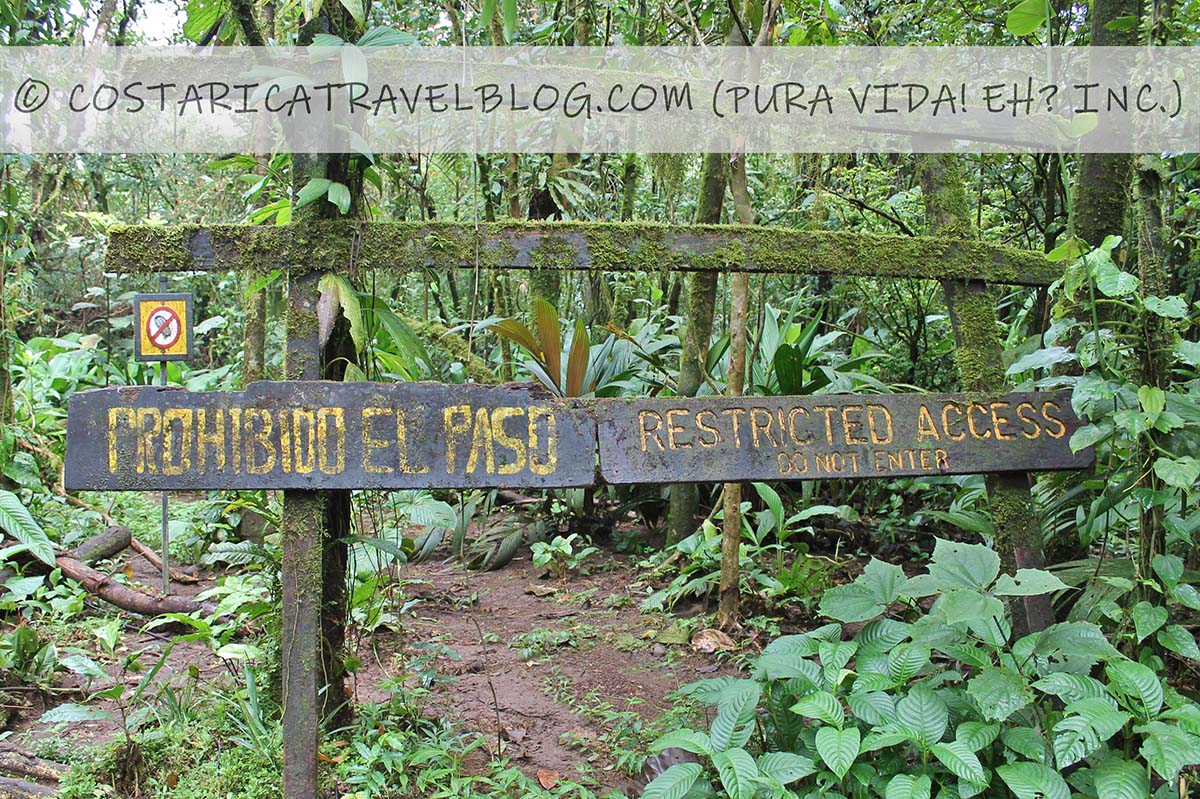
Get the Costa Rica info you need by browsing our article's TABLE OF CONTENTS:
- Costa Rica is safe if you travel consciously, cleverly, and with common sense. Here’s how.
- Robbery and assault
- Water safety (swimming and surfing safety)
- Transportation and driving safety
- If you rent a car, avoid driving after dark
- If you rent a car, purchase the maximum amount of car rental insurance
- Remember to lock your rental car and you keep your eye on your belongings while using transportation services
- Don’t take a taxi that’s not an official red taxi or an airport taxi
- Don’t become a victim of a car rental scam
- Identification and document safekeeping
- Money and spending safety
- Food and drink safety
- Wildlife encounters
- General travel safety
Costa Rica is safe if you travel consciously, cleverly, and with common sense. Here’s how.
If you’re asking yourself, “Is Costa Rica safe?” pat yourself on the back. Asking this question means safety is top of mind, and if you’re a traveler who prioritizes safety, you’re more likely to experience safe travels.
Our quick answer to your question is “Yes, Costa Rica is safe.” Is Costa Rica a utopia of purity and obedience? No, but what country is? Costa Rica isn’t problem-free, but it’s better than you’ve probably been led to believe, especially if your beliefs have been tainted by the struggles of other Central American nations.
Across all Central American nations, Costa Rica sticks out like a sore thumbs up. With nods in the directions of health care, education, environmental preservation, law enforcement, technological advancement, and tourism development, Costa Rica is a progressive second-world country. Costa Rica is also a travel destination that we feel comfortable recommending to travel groups, families with children, senior travelers, and independent backpackers, provided everyone acts responsibly.
Part of being a responsible traveler is knowing how to travel consciously, cleverly, and with common sense. If you could use some guidance in these areas, especially with respect to Costa Rica travel, familiarize yourself with our Costa Rica safety guide below. It outlines several ways to stay safe in Costa Rica.
Robbery and assault
Keep an eye on your possessions
Regardless of how you travel around Costa Rica and where you go, never leave your possessions unattended. Some common places where belongings are easily swiped include:
- Bus stations: Keep an eye on belongings near your seat at the station, in overhead bins on inside the bus, and in under-bus compartments outside of the bus.
- Beaches: Don’t bring valuable items to the beach unless a member of your travel group will stay within arm’s reach of them at all times. If you’re traveling alone and you wish to swim, consider bringing a small drybag to Costa Rica so you can take important items, such as hotel room keys and car keys, safely into the water with you.
- Airports: More on this below…
Watch out for sticky fingers at the airport
During Costa Rica’s high season, the exit gates at the SJO and LIR airports resemble mosh pits at heavy metal concerts. Swarms of professional drivers and hotel representatives flock to the airport exits to locate their clients, resulting in a crowd of Costa Ricans yelling out names, holding up signs, and asking travelers if they need a ride. Unattended luggage can quickly go missing amid the chaos. When you exit either airport, keep your luggage tightly in tow, and don’t stop walking until you’re on the other side of the crowd. Once you’re through the mass, you can stop, breathe in Costa Rica’s warm and humid air, gather your thoughts, and figure out where you need to go.
Avoid visiting the beach after dark
Every country has its good guys and its bad guys. Walking on the beach after dark, especially if you’re a woman and you’re traveling alone, is a big no-no. Common sense suggests that you can minimize your own vulnerability by not putting yourself in situations where you’re an easy target. Unfortunately, hanging out at any Costa Rican beach after dark (as peaceful and as calming as it sounds) is one of those situations.
Avoid visiting an ATM machine after dark
Like nighttime trips to the beach, visiting an ATM after dark is a situation best avoided. Bluntly put, doing so puts you at risk for robbery and assault. Though plenty of people withdraw cash from ATMs after dark without problem, we don’t recommend trying your luck.
Don’t spend more time than necessary at destinations with high crime rates
Obviously, crime can occur in any city, town, or community in Costa Rica, so being safe isn’t as simple as choosing some destinations over others. That said, there are pockets of places in Costa Rica that are markedly dangerous, especially for foreigners. Take note of the following list:
- The capital city of San Jose, mainly in non tourist-friendly areas that fall outside of the downtown core (a 12×10-block space) that we cover in our related blog post, 15 Things To Do In San Jose Costa Rica (And 3 Things To Skip Doing)
- The port city of Limon, on the Caribbean coast
- The town of Siquirres, between San Jose and Limon
- The town Guapiles, between San Jose and Limon
- The port city of Puntarenas, on the Pacific coast
Sometimes, Costa Rica travel plans require travelers to briefly visit or pass through one or more of the above areas. (For example, travel to Tortuguero typically requires passing through the Guapiles or Siquirres area, travel to popular southern Caribbean destinations like Cahuita and Puerto Viejo de Talamanca typically requires passing by Limon, and travel to destinations on the Nicoya Peninsula oftentimes sees travelers catching ferries from Puntarenas.) While we wouldn’t advise changing those travel plans (if you do, you’ll miss out on some key Costa Rican experiences!), it’s important to stay alert and minimize the amount of time you spend at any dangerous place. Suffice to stay, Limon, Siquirres, Guapiles, and Puntarenas are not places to make pitstops at. If possible, avoid staying overnight at any one of those places too.
Take protective measures at your accommodation(s)
This recommendation requires a disclaimer: Not once during my extensive travels in Costa Rica, which have seen me stay at hundreds of accommodations since the mid-2000s, have I ever been the victim of a break-and-enter or assault at a Costa Rican accommodation. That said, there are protective measures that I always take, regardless of where I stay, so it’s possible that my due diligence in this regard has contributed to, if not caused, this success. These are some of the protective measures that I take, and although some of them may seem extreme, I always err on the side of caution and prioritize safety whenever I travel:
- As soon as I enter a hotel room, I scan the entire room, including the closet, the shower, and under the bed, for intruders.
- I ensure all doors and windows have the ability to lock securely.
- I plug a handful of small nightlights into wall sockets around the room for use overnight (all of the plastic shields have been removed so each one is essentially a plug and tiny lightbulb).
- I set my portable, rechargeable, battery-operated lantern on the night table, within reach of the bed.
- I place my charged cell phone, which has a loud audio recording of an alarm saved on it (in the event that I ever need to sound off an alarm) on the night table, within reach of the bed.
- I set my portable doorstop alarm (pictured at the top of this article) to the “on” setting and position it under the front door.
Water safety (swimming and surfing safety)
Avoid swimming anywhere when the water/surf/waves are rough
This one should go without saying, but there have been far too many drowning incidents in Costa Rica to not explicitly state here that swimming in Costa Rica can be dangerous. Enter every body of water—whether it be the Pacific Ocean, the Caribbean Sea, a river, a waterfall, a hot spring, a pool, and/or a swimming hole—at your own risk. Riptides, rip currents, and undertows plague Costa Rica’s coasts and should always be a concern no matter which beach you visit. This being said, the currents at some Costa Rican beaches are stronger than others. Several beaches are marked with signs that indicate if dangerous water conditions are present but this doesn’t mean that beaches without signs are safe to swim at. Always swim cautiously and keep little ones within arm’s reach at all times. No beach getaway is worth your life or the life of someone you love.
Educate yourself on riptides, rip currents, and undertows
Panic is a leading cause of drowning. Before you travel, take a minute to familiarize yourself with the proper way of escaping a riptide/rip current (the internet has tons of information on this topic, simply search for “How to escape a riptide” or “How to escape a rip current”) so in the unfortunate event that you find yourself caught up in one during your trip, you’ll not only have the knowledge of how to get out but also you’ll have the confidence to execute that knowledge calmly.
If you’re unfamiliar with the terminology, know that riptides and rip currents are both strong currents that move water in a direction opposite the shore. (Riptides coincide with outgoing tides while rip currents can occur at any time.) In contrast, undertows typically run parallel to beaches and coincide with strong waves. All three water hazards can pull you deep into the water.
Transportation and driving safety
Not sure if renting a car in Costa Rica is the right choice for you? Don’t miss our related blog post:
If you rent a car, avoid driving after dark
Sundown in Costa Rica is around 6:00pm. If you intend to rent a car in Costa Rica, plan an itinerary that doesn’t require you to drive after dark so you don’t need to deal with the following hazards that can be tricky to see or maneuver at night:
- Roads without streetlights
- Roads laden with bumps and/or potholes
- Roads with sharp curves
- Roads that edge cliffs and don’t have guardrails
- Ceda (yield) signs that require drivers to slow down, if not come to a full stop (in the event of oncoming traffic)
- Bicyclists and/or motorcyclists with dim lights on their vehicles, if any lights at all
- Individuals walking along the shoulders of roads without sidewalks
- Wandering nocturnal wildlife
In addition, Costa Rica’s roads and weather conditions—mainly rain and fog—can produce poor visibility and other unfavorable driving conditions. If you absolutely must travel after dark, consider hiring a shared shuttle service or a private transfer service to get you where you need to go. Professional drivers are better familiar with Costa Rica’s roads and they know how to adapt to the country’s fluctuating weather conditions.
As to be expected, some routes in Costa Rica are more difficult to drive than others. Although we stand true to our recommendation above to not drive at night if possible, the following routes are particularly challenging and should absolutely not be driven after dark:
- Highway 2 between Cartago and San Isidro de El General (Cerro de la Muerte)
- Road 702 between Bajo Rodriguez (45 minutes south of La Fortuna) and San Ramon
- Road 142 between the Lake Arenal dam (20 minutes west of La Fortuna) and Tilaran
- Road 160 between Nosara and Samara
- Road 160 between Carrillo and Cobano
- Road 145/Road 606 between Tilaran and Monteverde
- Road 145/Road 606 between Las Juntas and Monteverde
- Road 606 between Sardinal and Monteverde
- Highway 32 between San Jose and Limon
If you rent a car, purchase the maximum amount of car rental insurance
Travelers aren’t immune to car accidents, so it’s possible you might find yourself caught up in one if you drive in Costa Rica. Though there’s no way to guarantee you won’t get into a car accident, you can maximize your protection by purchasing full (optional) car insurance. Yes, in this case, the total rental cost will be much more expensive than if you select basic mandatory insurance. Consider the price difference payment for your peace of mind. For more information about car insurance, see our related blog post: Costa Rica Car Rental Insurance Information.
Remember to lock your rental car and you keep your eye on your belongings while using transportation services
If you rent a car in Costa Rica, keep it locked at all times and parked in a secure and well-lit area. Don’t leave possessions in vehicles overnight. If you plan to use shared shuttle services or private transfer services to get around, keep your eyes on the vehicle if it makes a stop along the way. If you need to leave the vehicle (i.e., to eat or to visit the bathroom), take valuable possessions with you. Before de-boarding, check under and around your seat for any possessions that may have slipped out of your bags during the ride.
Don’t take a taxi that’s not an official red taxi or an airport taxi
Unofficial taxi drivers, who are also known as piratas, use their own vehicles for transporting individuals around Costa Rica. They are unlicensed drivers and therefore don’t provide the same level of professional, regulated service as official taxi drivers. I’d be lying if I said that Ricky and I don’t use them (we’re friends with several unofficial taxi drivers in Costa Rica), but we would never rely on one that we’re not personally familiar with and you shouldn’t either. Stick to official red taxis (taxis that drive red cars with a yellow triangle on the door) or official airport taxis (taxis that drive orange cars and are parked outside the airport) unless you know and trust an unofficial taxi driver.
Don’t become a victim of a car rental scam
Some vehicle rental agencies in Costa Rica practice shady business. For more information about this, see our related blog post: How Not To Fall For Costa Rica Car Rental Scams.
Identification and document safekeeping
Bring a copy of your passport to Costa Rica with you
Everyone thinks they won’t lose their passport until they do. Bring a hard copy (or two) of your passport with you to Costa Rica and keep it on you throughout your trip. Some tour operators will ask to see it if you plan to participate in guided tours, primarily tours that take place near the borders that Costa Rica shares with Nicaragua and Panama. Meanwhile, store your original passport in a safe place (i.e., lock it in your hotel room’s safe or lock it in your luggage). If you’d rather carry your original passport on your person, use a discrete carrying device such as a thin waste belt or cross-body bag that you can hide under your clothes.
Email yourself a copy of all important receipts, confirmations, and travel documents
If traveling with a copy of your passport is a smart idea, it’s equally smart to email yourself an electronic copy of all important travel documents so you can retrieve them online in the event you lose your hard copies. Internet access is widespread in Costa Rica, so your electronic documents will never be far away.
Browse online safely
Money and spending safety
Non-secure Wi-Fi signals (and in some cases, secure Wi-Fi signals) can put your electronic devices at risk of being hacked by people who are tapped into the same signal as you. Avoid logging into private accounts (such as your online banking account) or sending or opening confidential information when you are connected to a non-secure Wi-Fi signal in Costa Rica. Limit your internet use to necessary travel-related functions; for example, to verify online schedules, to communicate with individuals who are helping you coordinate trip details, or to review reservation confirmation details.
Have your credit card provider temporarily release any international travel spending bans on your account
Some credit card providers place bans on international credit card purchases to help prevent fraud. Call your credit card provider to confirm whether an international spending ban is in place for your account and if so, ask them to temporarily lift the ban during the period you intend to travel. This should help you avoid a situation where you’re desperate and strapped for cash in Costa Rica.
Don’t rely on traveler’s cheques
Most hotels, tour operators, transportation service providers, restaurants, and stores in Costa Rica do not accept traveler’s cheques. A handful of all-inclusive resorts are the exception. If you don’t feel comfortable carrying a full vacation’s worth of cash during your trip and you don’t want to pay for items with a credit card to avoid abhorrent fees, you can bring traveler’s cheques to Costa Rica with the intent to visit a bank every few days to cash them in increments. At the bank, make sure the signature you draw on each cheque is an exact match to the signature provided on your identification. In the past, I was refused the use of traveler’s cheques at Costa Rican banks because my signatures varied ever so slightly. Not only did one bank deny me access to my own cash, but I was subsequently denied service at a second bank because my traveler’s cheques had already been signed elsewhere, leaving me without claim to my own money.
Don’t purchase tours from street-corner salesmen
Tour salesmen gather on street corners in popular tourist towns in Costa Rica. Some are legitimate sellers, but others are scam artists who see you coming a mile away. Save yourself the doubt and a headache, not to mention the hassle and financial loss caused by fraudulent sales, and reserve your preferred nature and adventure tours online through reputable companies before traveling to Costa Rica. Alternatively, you may find yourself waiting at your hotel for a tour pick-up service that was never coordinated, or hunting down the street-patrolling salesman who walked off with your hard-earned cash.
Check (and double-check) your currency conversion
The process of exchanging money between US dollars and Costa Rican colones is an opportunity for buyers to take advantage of purchasers. Make sure you know the going currency conversion rate and you understand the exchange between the currency types. You may find it helpful to create a small rate conversion cheat sheet and keep it with you throughout your trip; our related blog post: Costa Rican Colones To American Dollars: Exchanging Money In Costa Rica provides a few to get you going. The cheat sheet will come in handy when you’re standing in a checkout line, hurriedly trying to calculate how many dollars you need to purchase an item priced in colones, or vice versa.
Divvy up your cash and credit cards in your luggage
Have you ever experienced a moment of panic when you grab at your pocket and your wallet is nowhere to be found? Those few seconds are frightening and frustrating. While we can’t be sure you won’t lose your wallet in Costa Rica, if you split your cash and credit cards across your luggage before you travel, we bet you’ll be less likely to panic if you do. Hide your cash and credit cards in at least three separate pieces of luggage, assuming you have them. This way, if you happen to lose some during your trip, you’ll have at least two backup funding sources that you can rely on throughout the remainder of your vacation.
Food and drink safety
Unless specifically identified as potable, avoid drinking tap water
You may find that our advice here goes against that of other Costa Rica resources, who state that the tap water is fine to drink in most parts of Costa Rica, save for destinations on the Caribbean side of the country and remote, non-touristy communities countrywide. While we don’t disagree (as a born-and-raised Costa Rican, Ricky only ever drank the tap water and he’s perfectly fine), we’ve worked with travelers long enough to know that sometimes the local water just doesn’t agree with their systems, not because the water is notably unsanitary but because of body sensitivities. Saying that the tap water is clean (in most areas of the country) feels pointless if the tap water is still going to make some travelers feel unwell, so, in an effort to help every traveler feel as good as possible during their trip, we’ll say this: stick to drinking water from sources that specifically confirm the water is potable. Assuming the source can be trusted, we believe you’ll be less likely to react to that water than water from other taps, even if you’re at a destination where the tap water is generally thought to be potable. If in doubt, you can bring your own water filter to Costa Rica or purchase bottled water throughout your trip, although the latter option isn’t eco-friendly. 🙁
Keep a list of common Spanish phrases and questions handy throughout your trip, especially if you have food allergies, sensitivities, or other dietary requests
If you don’t speak Spanish, don’t fret! Most Costa Ricans who work in the tourism industry speak English, at least enough to get by while corresponding with travelers. You may find yourself in a situation, though, where you wish you could mutter more than “Hola!“, “Adios!“, and “Una cerveza, por favor.” Having a short cheat sheet of Spanish words or phrases on hand can help; Google Translator can assist you in creating one. You never know when one of the following phrases might come in handy!
- ¿Cómo llego a ___? (How do I get to…?)
- ¿Dónde está el baño? (Where is the bathroom?)
- ¿Dónde está el hotel ___? (Where is the ___ hotel?)
- ¿Dónde está el restaurante ___? (Where is the ___ restaurant?)
- ¿A qué hora es el ___? (At what time is the ___?)
- ¿Cuánto tiempo se tarda en ___? (How long does it take to ___?)
- Soy alérgico a ___ (I am allergic to ___)
- No puedo tener ___ (I cannot have ___)
- No puedo comer ___ (I cannot eat ___)
- ¿Tiene esto ___? (Does this have ___?)
- Me siento mal (I feel sick)
- Soy vegetariano/a (I am vegetarian)
- Soy vegano (I am vegan)
- Carne (meat)
- Lácteos (dairy)
- Sin gluten (gluten-free)
Wildlife encounters
Costa Rica’s wildlife population is diverse and abundant, and it’s likely that you’ll encounter a lot of it during your visit. Fortunately, the overwhelming majority of Costa Rica’s resident wildlife is harmless to humans. Regardless, to optimize your safety and that of the local wildlife, it’s imperative that you do the following.
Keep a safe distance from all wildlife using this calculation
Conceptualize a “safe distance” as being no closer to the creature than 20 times its body length. So, if you’re admiring an ant that’s half an inch in length, do so from at least 10 inches away. If you’ve spotted a 1.5-meter-long jaguar in the wild, stay at least 30 meters away from it.
Stay on marked nature trails
A large part of the Costa Rica experience is to get out into nature and explore it on foot. As such, the country has an extensive national park, biological reserve, and wildlife refuge system wherein nature trails are well-marked. As a Costa Rica visitor, you’ll have your pick of nature trails to explore—some are incredibly popular and others lay off the beaten path, some provide challenging hikes and others merely require a light stroll, some showcase rainforest or cloud forest ecosystems and others delve into the dry forest or wetlands, and so on—and the immense selection of routes means that there’s absolutely no reason for you to go rogue and start trekking off trails. Doing so is downright irresponsible, not to mention a slap in the face of the eco-conscious nation that trustingly welcomed you into its home with open arms. Beyond the reason that it’s the kind thing to do, stick to exploring Costa Rica on marked trails to ensure that you:
- Don’t accidentally encounter dangerous wildlife in their habitat, compromising your own safety.
- Don’t accidentally trek through a wildlife habitat that’s dangerous, compromising your own safety and that of any wildlife.
- Don’t negatively affect or ruin precious habitats or ecosystems, compromising the safety of the environment.
- Don’t negatively affect or ruin critical biological research that’s being performed in the area, compromising the safety of our future.
Refrain from exploring Costa Rica’s natural areas with your fingers and hands
Some Costa Rican wildlife, including poisonous varieties of snakes, spiders, and insects, lurks in the darkness of crevices and holes in trees and on the ground. Other potentially dangerous wildlife, like poisonous frogs, sometimes hides under leaves and other forest debris. Exploring Costa Rica with your hands—running them over tree bark, turning over leaves, touching flowers, reaching into holes, and so on—is a big no-no. Doing so significantly increases your chance of being bit or stung. So, when exploring Costa Rica’s outdoors, act as you (hopefully) did on the playground when you were a child and keep your hands to yourself.
Avoid swimming or wading in waterlogged areas
A lot of wildlife resides in and around water, and Costa Rica has plenty of it. Swamps, marshes, rivers, lakes, lagoons, streams, and estuaries all exist in Costa Rica, and in great numbers, creating countless places where surprise wildlife encounters can occur, including encounters with poisonous species. Exercise extreme caution when swimming, wading in, or relaxing by waterlogged areas, especially at those with next to no current or few rapids. Dangerous wildlife prefers still waters. (Don’t miss the section below about crocodiles and their fondness for estuaries.)
In addition to the general wildlife-specific advice above, below are some important ways to protect yourself from possible harm by some of Costa Rica’s most feared and stress-inducing wildlife species.
Snake safety
I’ve explored Costa Rica since the mid-2000s. You may be surprised to learn that, apart from tours that I participated in for the specific purpose of seeing wildlife, including snakes, I’ve only encountered snakes at random on a few occasions. (Most of those occasions were during deep-woods adventures and I had been exploring the outdoors after dark, when snakes are most active, so I had practically set myself up for the experience.) If you’re afraid of snakes and want to minimize the chance of seeing them during your trip, avoid participating in night tours, and when you explore natural areas during the day, do so alongside a tour guide. Tour guides are usually pretty good at spotting snakes, and they can lead you safely around snakes to avoid unwanted encounters.
Crocodile safety
Sadly, every so often we hear a report of an individual, typically a local, whose life was claimed by a crocodile. Usually, it’s the case that the individual was swimming in an area where crocodiles frequent, such as an estuary. I cannot stress this point enough: do not swim in any estuary in Costa Rica. Estuaries flow throughout the nation, but those in notably touristy regions include the estuaries you’ll find:
- Between Playa Grande and Tamarindo
- North of Playa Avellanas, south of Junquillal, near Marbella, and south of San Juanillo (between Tamarindo and Nosara)
- At Playa Nosara (north of Guiones)
- At Playa Buena Vista (west of Samara)
- At Playa Camaronal, Playa Bejuco, Playa San Miguel, Playa Coyote, and Playa Bongo (between Samara and Santa Teresa)
- At Playa Tambor, Playa Pochote, and Playa Organos (between Montezuma and Paquera)
- At Puntarenas, Tivives, Tarcoles, and Herradura (between Puntarenas and Jaco)
- At Esterillos, at Playa Bejuco, near Parrita, at Damas Island, at Dominical, at Bahia, and near Ojochal (between Jaco and Ojochal)
- Inside the Terraba-Sierpe National Wetlands, north of Drake Bay, at Playa Sirena, and at Puerto Jimenez (on the Osa Peninsula)
- At Playa Zancudo (south of Golfito)
- At Barra del Colorado, at Tortuguero, at Parismina, north of Cahuita, and at Playa Gandoca (on the Caribbean coast)
Jungle cat safety
Encounters with jungle cats are extremely rare in Costa Rica. (Costa Rica is home to six species of jungle cats: jaguars, pumas, ocelots, margays, oncillas, and jaguarundi.) Should you have an encounter, though, it’s important to stay calm and remain respectful of the cat’s territory throughout the experience. To ensure you don’t wander though a jaguar or puma’s home accidentally or disrespectfully, drawing the attention of the predatory animal, hire a tour guide to explore any areas of Costa Rica where jungle cats are believed to reside. Although jungle cats have the ability to reach any part of Costa Rica (it wasn’t long ago that we caught a segment on the local news about a puma that was wandering around the capital city of San Jose), the following destinations are more likely than others to produce jungle cat encounters because cats are known to reside there:
- inside the Tortuguero National Park on the Caribbean coast
- inside the Corcovado National Park and elsewhere around the Osa Peninsula
- inside the Santa Rosa National Park and other nearby protected land areas in Guanacaste
- inside the La Amistad International Park and other remote, largely uninhabited areas in the southern inland region
Mosquito safety
More than snakes, crocodiles, and jungle cats combined, travelers ask me about mosquitos, probably because they assume that they’re more likely to get bitten by a mosquito than any of the other three perilous creatures during their trip. (And, they assume correctly.) To be frank, my advice regarding mosquitoes is to use insect repellent everywhere you go in Costa Rica, just to be safe. Dengue fever, the Zika virus, Chagas disease, and Malaria (at the time of writing this article, Malaria was present in the provinces of Alajuela and Limon only, with rare to no transmission in other parts of the country) are real concerns, and being proactive by wearing insect repellent is smart travel behavior. It’s also wise to avoid hanging out in areas with stagnant water; they’re the preferred gathering place of hungry, human-blood-loving mosquitos.
Note that it isn’t necessary to load yourself up with insect-repelling sprays laced with chemicals 24/7. If you can afford to purchase a few different types of insect repellent, even a small bottle of each, you can alternate between repellents, jumping between light coverage and more protective coverage, or natural repellents and ones with DEET. I keep the following three insect repellent products on hand and use them throughout my travels in Costa Rica:
- A eucalyptus-oil-based insect repellent (pictured at right in the photo at the top of this article). This plant-based product is seemingly the least harmful to the environment and to human health, but it lasts the fewest hours and isn’t as effective at repelling mosquitos as other products. I tend to use it as an indoor insect repellent, in the event that I stay at an accommodation that has open-air walls or ceilings. It’s also the only insect repellent that I ever spray on my skin. (The two types of repellents listed below get sprayed onto my clothes and/or travel gear.)
- A DEET-based insect repellent (pictured at left in the photo at the top of this article). This product is the strongest (and the strongest-smelling) insect repellent. I use it whenever I head out into heavily forested areas on hikes, boat/safari/kayak/canoe tours, hanging bridge tours, zip-line tours, canyoning tours, horseback-riding tours, night tours, etc., and I also use it whenever I’m exploring the Caribbean coast outdoors, regardless of where I am or what I’m doing.
- An Icaridin (Picaridin)-based insect repellent (pictured in the middle of the photo at the top of this article). This product is my go-to product for most light outdoor excursions experienced in destinations around the country, save for the Caribbean. By light excursions, I mean tours that take place outdoors but that don’t typically involve deep-woods exploration, such as botanical garden tours, coffee/chocolate/sugarcane tours, volcano crater tours, and city tours.
Contrary to popular belief, which suggests that you should purchase insect repellent in Costa Rica, I recommend bringing insect repellent from home. You can get a run-of-the-mill insect repellent here (note that there aren’t many options for plant-based varieties), but it’ll be cheaper if you buy it from home, and doing so guarantees you get the kind(s) that you want. Be sure to purchase insect repellent that has a push top, not an aerosol top, to avoid conflict with your airline. (Some airlines take issue with or have specific policies regarding aerosols.)
General travel safety
Vacations are precious. You probably don’t get them all that often, you likely work incredibly hard to afford them, and they create opportunities for you and your loved ones to make once-in-a-lifetime memories. They’re your chance to learn, explore, indulge, and relax, and in a world where work likely consumes most of your days, vacations are your time to play.
But sometimes when people vacation, they forget about their vulnerabilities. They focus on the fun and miss all of the risk; they get caught up in the process of learning something new and let go of the tenets of common sense. They look forward to what lies ahead but often lose sight of what’s required to get there safely, and then back home again. I call this phenomenon travel brain. It’s a product of the anticipation, excitement, chaos, confusion, and nonstop stimulation that comes with vacationing, and its a safety hazard because its wildly distracting. Below are a few ways to maintain a level head while traveling, ultimately avoiding a classic case of travel brain.
Get and remain organized
A lot of people are organized travelers; they plan trips down to the last detail, make sure they have all the necessary travel documents before they leave home, and know their trip itinerary by heart. Then they exit the airport into the warm, tropical climate and life is pura vida. They relax and tell themselves not to stress about anything, and then they lose their passport, have something stolen from them off a beach or a bus, or injure themselves on an impromptu nature trek. Somewhere between home and paradise they transform from type A to type laZy, and their overall trip experience suffers. To ensure that your vacation doesn’t set you up for disappointment or disaster, keep your wits about you throughout the entire trip. In other words, strike a balance between relaxing your mind when its completely safe to do so and keeping it sharp otherwise.
Plan and pack for your tours/activities accordingly
Costa Rica is a tropical country that delivers an endless supply of nature and adventure tours. If you know you’ll be active during your trip, bring the right equipment, apparel, and accessories from home to safely execute your desired activities. If you plan to hike, bring comfortable shoes, long pants, socks, band-aids, a hat, and insect repellent. (See above for repellent product suggestions.) If you plan to raft, zipline, or go canyoning, bring strap-on shoes (flip-flops are not permitted) and clothing you’ll feel comfortable wearing under equipment (e.g., waist harnesses, lifejackets, helmets). If you merely want to lay out on a beach, bring sunscreen, sunglasses, a hat, a long-sleeve shirt, a towel, a reusable water bottle, and a waterproof container that you can use to carry valuables into the water with you. A lot of travel mistakes can be avoided by planning for activities and potential problems in advance, so make it a priority to pack mindfully and thoroughly for your Costa Rica trip.
For help deciding which items you should bring to Costa Rica, check out our related blog post:
Pay attention to travel-planning details
Vacation-planning is relatively easy, but effective vacation-planning, which is more likely to produce safer travel experiences, is a far more complex, Tetris-like task. For example, anyone can choose a host of tours and activities to participate in during their trip, but effective planners also schedule enough hours of sleep and rest to avoid physical exhaustion. Furthermore, most travelers dedicate time to determining how they’ll travel from place to place (either in a rental car, a shuttle, a private transfer service, a bus, a taxi, a plane, or a boat), but the smartest travelers also consider the length and road condition of each route, which can inform several other decisions from whether motion sickness or antianxiety medication should be taken to whether it would be advantageous to have snacks at the ready. Maintaining your physical and mental health while on vacation is an important part of staying safe; we all know how poor our decision-making can get when we’re grumpy, hungry, and/or not feeling well.
Don’t assume other people care more about your well-being than you do
In the decades that we’ve traveled around Costa Rica and operated our business, Pura Vida! eh? Inc., we’ve had the pleasure of collaborating with highly reputable hotels, tour operators, and transportation service providers who make the safety of travelers (and locals) a priority; they’re licensed where necessary, they employ trained and/or certified individuals, and they have the required insurances and/or permissions to carryout their operations in safe ways. All of that said, no one in Costa Rica will care for your well-being more than you. (The same can be said about the citizens you share your home country with.) You are responsible for yourself, both at home and while on vacation. Stay alert. Ask questions. If something doesn’t look or feel right, trust your instincts. If you don’t, and you’re not pleased with a particular outcome, you’ll regret not speaking up.
Remember, your Costa Rica trip is just a vacation
Your vacation may be the only time you visit Costa Rica, and I can understand the desire to want to make the trip memorable. But, as social media has shown us time and time again, vacationers often manifest misery in their efforts to create memorable moments. In my opinion, moments that rob people of their money, time, innocence, and/or life are never worth it, no matter how beautiful or rare the moments are. So, treat your Costa Rica trip for exactly what it is: a vacation (“a period spent away from home or business in travel or recreation”, according to Merriam-Webster), not a challenge to be a standout, a hero, or more popular. Do be adventurous, explore, and try new things, but please don’t dangle off the side of a hanging bridge, jump from the top of a waterfall without the guidance of a trusted local, brave a dangerous wave, perch yourself on the edge of a cliff, or do anything else that’s undoubtedly risky. Your family, friends, coworkers, pets, and houseplants need you more than Instagram needs your selfies. 😉
QUESTION TO COMMENT ON: What other safety tips would you recommend to travelers visiting Costa Rica?
Pura vida!

Hey, Costa Rica Travel Blog reader, thank you for visiting and reading our blog! We're truly grateful for your time and preference.
Do you know that your spam-free reading experience is most important to us? Unlike some other Costa Rica blogs, we do not to sell your personal information, and we choose not to display ads, sponsored content, or affiliate marketing on our blog so we can keep your visit as distraction- and junk-free as possible. Because we prioritize your privacy, we don't earn money when you visit us, when you sign up for our e-course, or when you click on our links, which means the time and work we put into this blog—including its 300+ articles—is entirely voluntary! If you find our content valuable, and you'd like to thank us for making the trip-planning process easier and your Costa Rica vacation more enjoyable, please consider making a small donation ($1, $2, $3, or an amount of your choosing) to our blog. Doing so is a great way to pat us on the back if you feel we deserve it. 😊 Pura vida, amigos!
Click on the button above to donate through PayPal. (If you cannot see the PayPal button above, click here.) A PayPal account is not required to make a donation; credit and debit cards are also accepted. PayPal donations are confidential; we never see your payment details.
Love our blog? Check out our other Costa Rica-related projects, too:

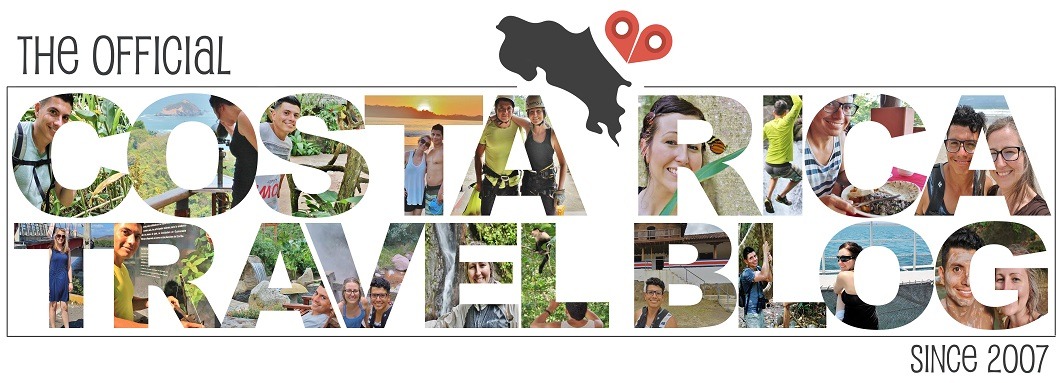

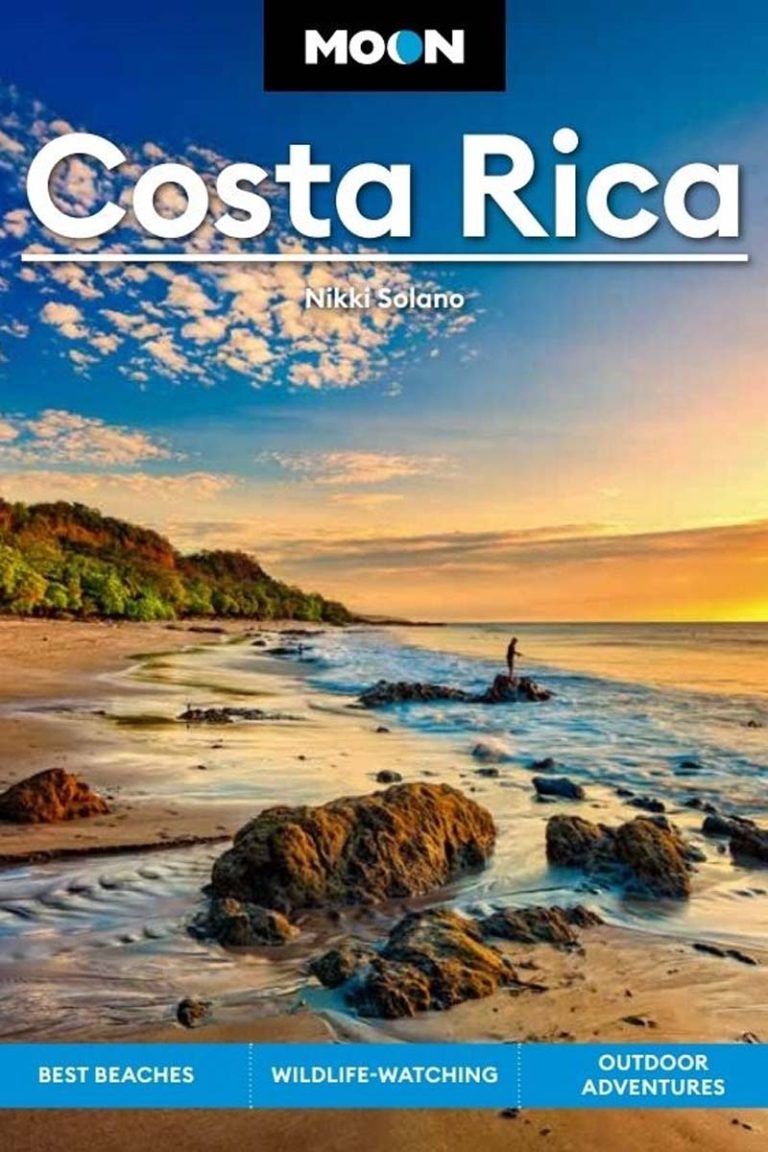
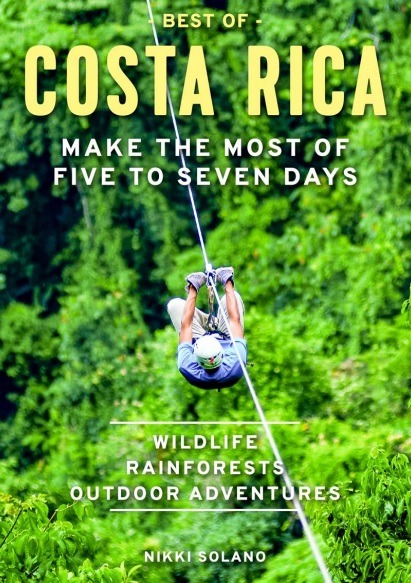

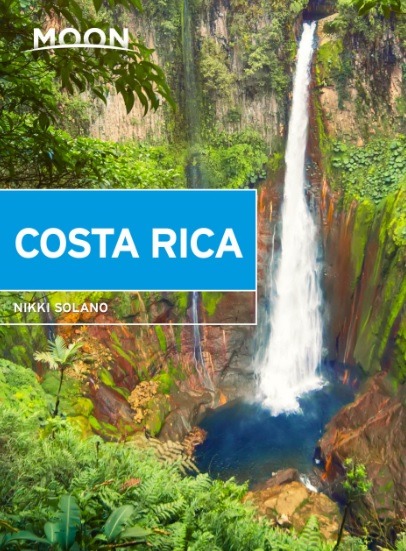











Tagged: adventure, beach, costa rica, costa rica travel, costa rica travel tips, costa rica vacation, nature, rainforest, safety, tourism, travel, travel guide, travel tips, vacation